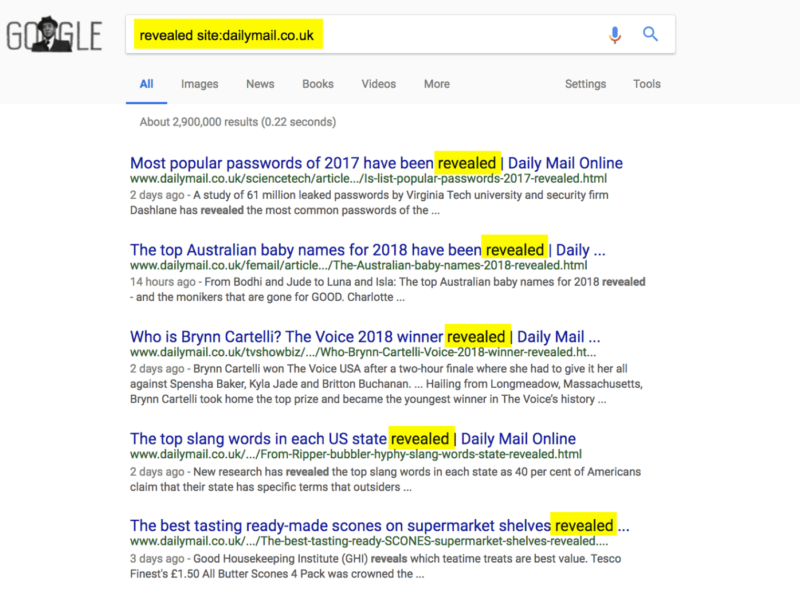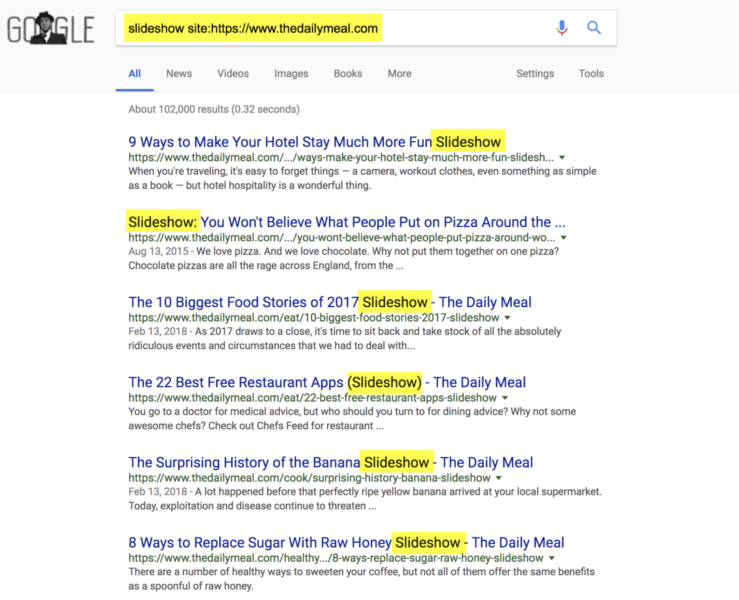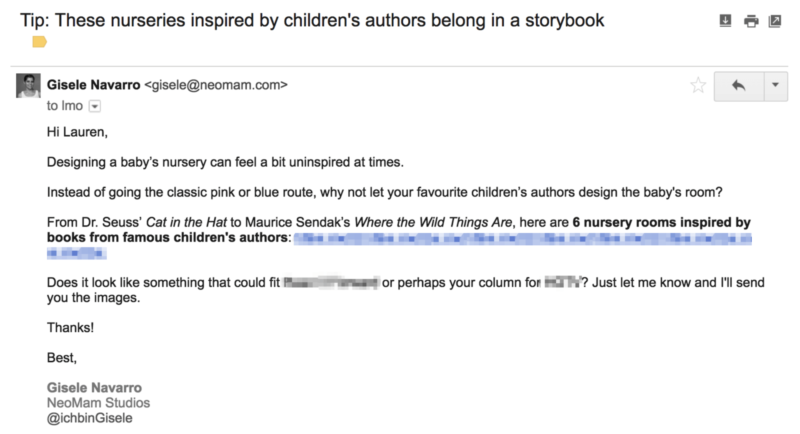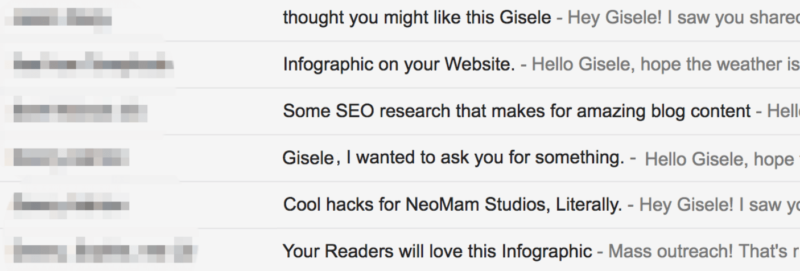How to create catchy, effective subject lines for link outreach
Are your outreach emails falling flat? Contributor Gisele Navarro shares specific tips you can use to write subject lines that will work to get your emails opened.

In the world of link building, few things are more frustrating than spending hours sending carefully crafted emails to people and not getting a single reply.
None. Zero. Nada. Nichts.
Perhaps a bunch of those initial emails landed on seldom-used inboxes, or maybe some of the people on your list are not the right people to contact about your content.
At this point, most of us will sit down and build another list. It makes sense, right?
But before you decide to build another list, did you check your email open rates? If it’s below 5 percent, then your subject line probably sucks.
Before spending more time finding new sites, you should fix your subject line and try again.
Let’s look at tested formulas and subject-line mistakes you need to stop making right now.
Can a subject line really make such a difference?
Much has been written about the perfect subject line in the world of email marketing, but less about content promotion.
That’s why you see so many email marketing tips being applied to link outreach, even though they are two very different worlds.
In one world, you’re more likely to be contacting someone who has opted in because she wants to receive your emails.
In the other world, you’re pitching content to someone who doesn’t know you in hopes of getting a link back to your site.
The scenario is different, so your mindset needs to be different as well.
The foot-in-the-door technique
One of the most powerful theories I’ve applied to my subject lines comes from the world of social psychology, more specifically from the psychology of compliance.
The foot-in-the-door technique tells us that agreeing to a small request will increase the likelihood of agreeing to a second, larger request.
For example, imagine one of your colleagues asked you to sit in on her behalf at the weekly client call because she has a personal errand to attend to. This is a small request that seems reasonable: You work with this client and know what’s going on, so you attend the call and share updates with the client. A week later, the same colleague asks you to take her place on all future weekly calls with this client.
This is definitely a bigger request than the first one.
Research shows that the foot-in-the-door technique will work as long as the big request is consistent with or similar in nature to the original, smaller request. But how does this connect to the subject line of your link pitch?
Our small request here is to open the email; that’s our foot in the door. The larger request will be to get the link.
So, how can we launch our small request? It’s actually quite simple:
Make sure your subject line clearly states what the email is about.
If they click on it, they’ve just told you they’re interested in what you’re sharing.
You now have your foot in the door.
When it comes time for the “big” request of linking to your content, it won’t seem like a big or crazy question.
5 tips to supercharge your subject lines
Pair a targeted prospect list with a strong subject line, and you’re bound to get links. Here are a few tweaks that have worked for me.
1. Be specific about the format of your content
You want your recipient to be fully committed to what they are about to see before they click on the link.
Remember that for the foot-in-the-door technique to work, there has to be consistency between the small and the big request.
That’s why your subject line should not only state the topic of your content but also its format.
2. Mention the site when it matters
In most cases, you will be pitching your content to journalists and bloggers who only write for the site you are targeting, so there is no need to drop the name of the site into your subject line.
It’s a different situation when you’re contacting someone who writes for multiple publications. In those cases, my advice is to mention the name of the specific publication you are targeting to make sure your foot is in the right door.
3. Convey the email’s purpose
To help journalists and editors immediately identify your email as a pitch, try adding these words to your subject lines:
- Story
- Tip
- Story idea
This will be key in those cases where the topic of your content could be mistaken for a different type of message, such as a sales pitch or junk mail.
4. Pitch your content to journalists in their language
Before committing to a subject line, spend time reading how the types of sites you’re targeting write their own headlines. What do they focus on?
Are there any words they use often?
For example, you might want to add the word “revealed” to the subject line of an email you send to a journalist from the Daily Mail:
Seems they really like the word, so use it!
If you are pitching a series of images, you could specify [VISUALS] or [PHOTOS] in your subject line. But it’s worth checking if there’s another word that the publications you’re targeting regularly use for those types of features. The publication is giving you hints; use them.
5. Choose a journalist’s headline as your subject line when following up
When the time comes for you to follow up with unresponsive targets, don’t just send another email asking if they received your pitch.
Go through the coverage you’ve already achieved for that campaign and pick your favorite headline. This will be your subject line for the follow-up round. Here’s an example: A few weeks ago, we were promoting a new project and got a nice feature with a catchy headline that caught my eye:
So what did I do? I used that catchy headline in my outreach email!
The title made a major publication, so why not use it as the subject line of your email?
The subject line practices you should stop using today (and why)
If you made it to this sentence, then you know your subject lines are your foot in the door, so you have to be smart about how you use them.
Here are five common subject line faux-pas to avoid:
1. Fake reply and fake follow-up
If your plan is to make them think you are having an ongoing conversation just to get an email open, I’ve got news for you: They will realize you tricked them as soon as they read the first sentence of your email.
Lying to people won’t get you a link, but it will get you marked as spam and ignored.
2. ‘I loved your article’ and other open-ended subject lines
If you want to build rapport with a writer, by all means, tell them how much you like their work. But don’t make them believe that you’re a fan if all you really want is for them to link to your content.
Your subject lines set expectations.
When choosing to go with an open-ended or unrelated subject line, you might get them to open your email out of curiosity, but if your content doesn’t match up to the expectations you’ve set, then the “big request” will be ignored.
3. Trying to impress with unnecessary adjectives and adverbs
Superlative adjectives and adverbs are nothing more than you projecting your opinion onto the pitch in hopes of making it juicier and more clickbaity.
Remember: Your subject line will set the tone. If you shower it with “the best” and “most useful” descriptions, you may set yourself up to fail. It’s not about what you think, it’s what your recipients will think.
If the journalist clicks on the link and doesn’t find what she thinks is “the best,” then you’ve lost your chance.
It’s the difference between these two:
The first subject line is trying too hard, don’t you think?
You don’t need to be clever, you just need to make it easier for them to quickly know what your email is all about.
Subject lines set expectations
The majority of the advice out there about subject lines comes from the email marketing world, but link outreach is a different ball game.
Utilizing the foot-in-the-door technique will help you develop a new mindset for writing subject lines that will get you links.
Next time you’re writing an outreach email, try to be as specific as possible in your subject line to make sure that your small request (the email open) is consistent to your big request (the link to your content).
Keep an eye on your open rates, and you will soon learn which subject lines are working for you.
Now, go get some links!
Contributing authors are invited to create content for Search Engine Land and are chosen for their expertise and contribution to the search community. Our contributors work under the oversight of the editorial staff and contributions are checked for quality and relevance to our readers. The opinions they express are their own.
Related stories
New on Search Engine Land










